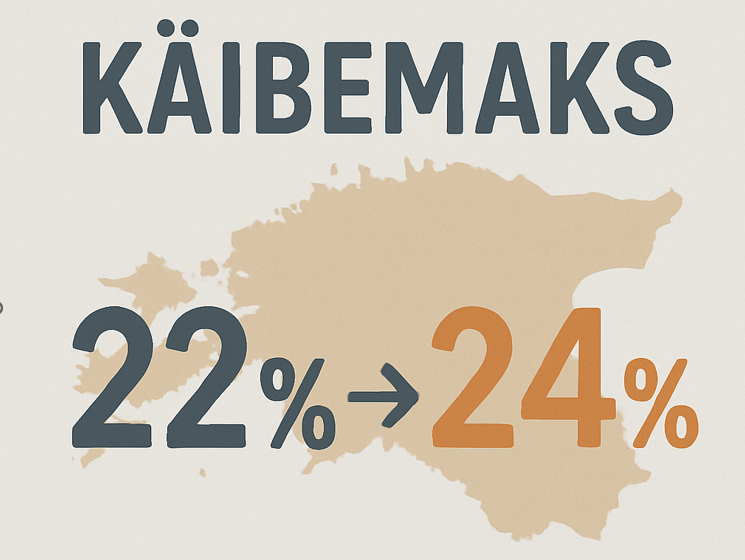
The government decided to make the VAT increase permanent, which means that the current temporary tax increase will remain in effect indefinitely. On the other hand, the corporate profit tax +2% was abolished, which would have disrupted Estonia's simple tax system and resulted in development costs for both the state and entrepreneurs.
Good news and bad news: income tax system restored, VAT increase indefinitely
The government's decision to restore the previous system, where companies pay income tax only on distributed profits, not on current profits, preserves a simple tax system in Estonia that has been widely recognized internationally.
The change will also eliminate the 2 percent income tax liability of natural persons starting from the first euro, but the income tax rate will still reach 24 percent starting in 2026.
In return, the government decided to make the temporary VAT rate increase permanent. Thus, the tax rate will be 24 percent from July 1, 2025, and there are no plans to reduce it. The reason is the need to ensure stable financing for defense costs, which are persistently high.
What will the changes bring?
Making the VAT increase indefinite means that consumers will have to deal with higher prices for a longer period of time. The changes restore the logic of the Estonian tax system and prevent companies from being placed under additional tax pressure. This is a much-needed relief in today's difficult economic situation, contributing to the stabilization of public finances and ensuring security.
The implementation of the security tax in its original form would have required the development of the Tax and Customs Board's IT systems, the estimated costs of which would have been 950,000 euros in 2025, 735,000 euros in 2026 and 525,000 euros in 2027. Thus, significant savings in IT development costs will also be achieved.
Estonian VAT rate in the context of the European Union
The increase in the standard VAT rate to 24% from July 1, 2025 will place Estonia among the countries with the highest VAT rates among the European Union member states, although it will still be below the rates of Hungary and Scandinavian countries.
Comparison with other EU countries:
- Hungary: 27% (highest in the EU)
- Finland: 25.5%
- Sweden and Denmark: 25%
- Greece: 24%
- Estonia: 24% (from July 2025)
- Ireland and Poland: 23%
- Spain, Lithuania, Latvia, Czech Republic, Netherlands: 21%
- Germany and Romania: 19%
- Luxembourg: 17% (lowest in the EU)
An increase in the VAT rate in Estonia may affect the purchasing power of consumers and the pricing strategies of companies.



